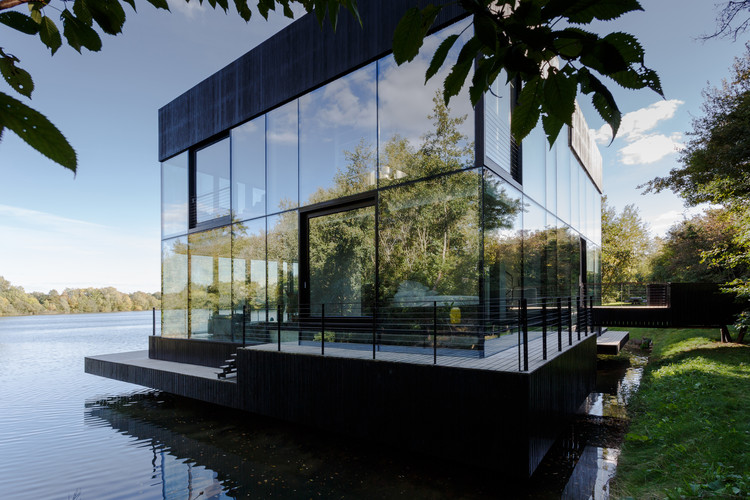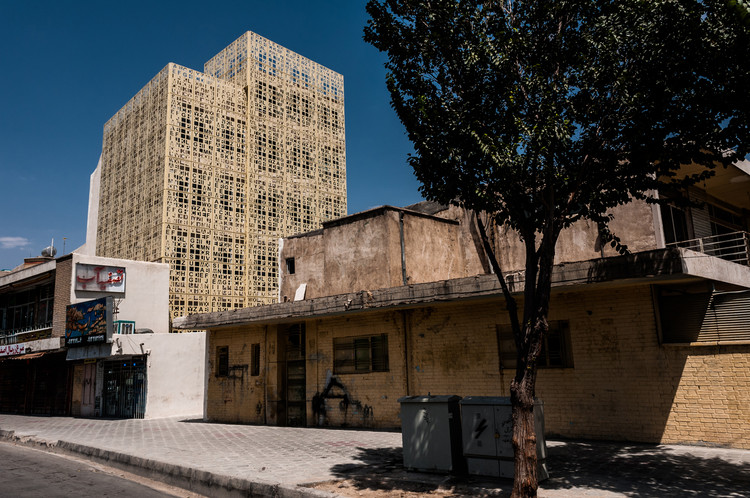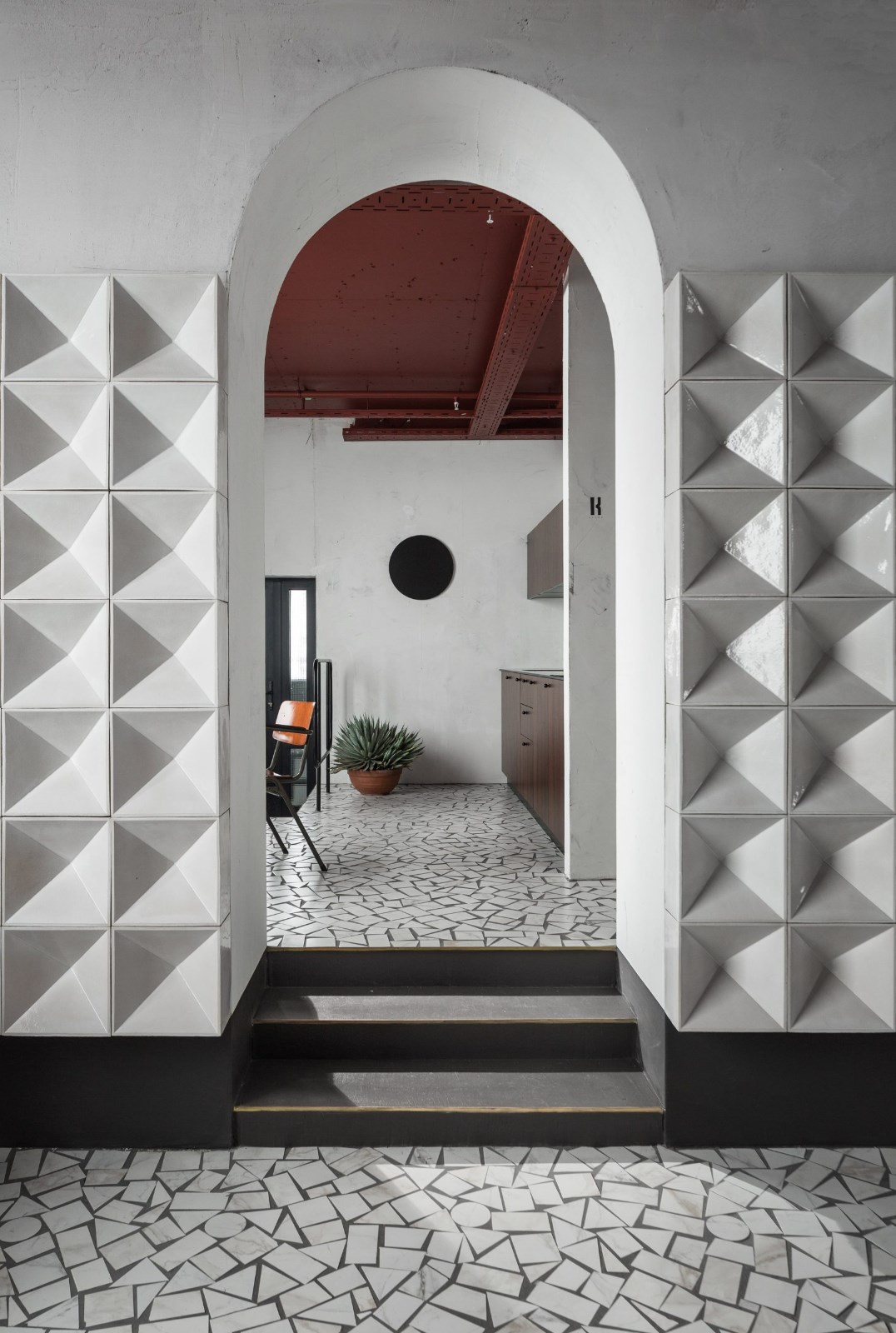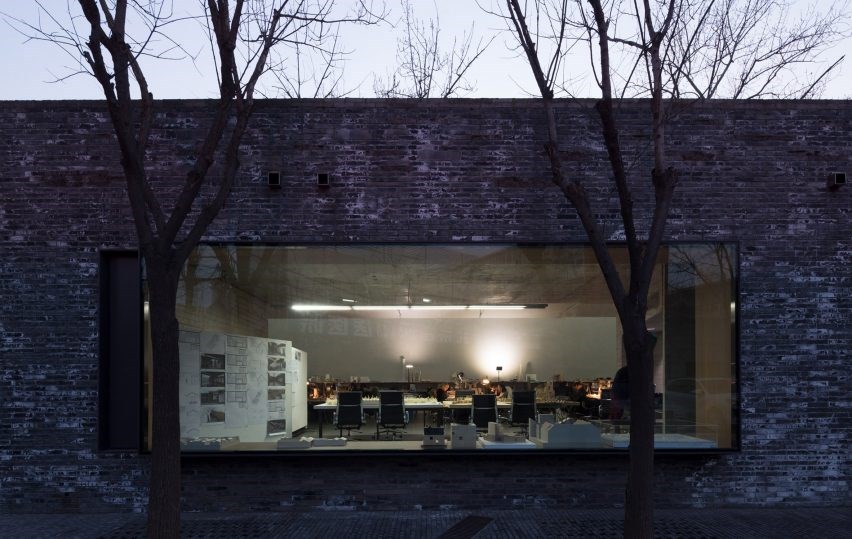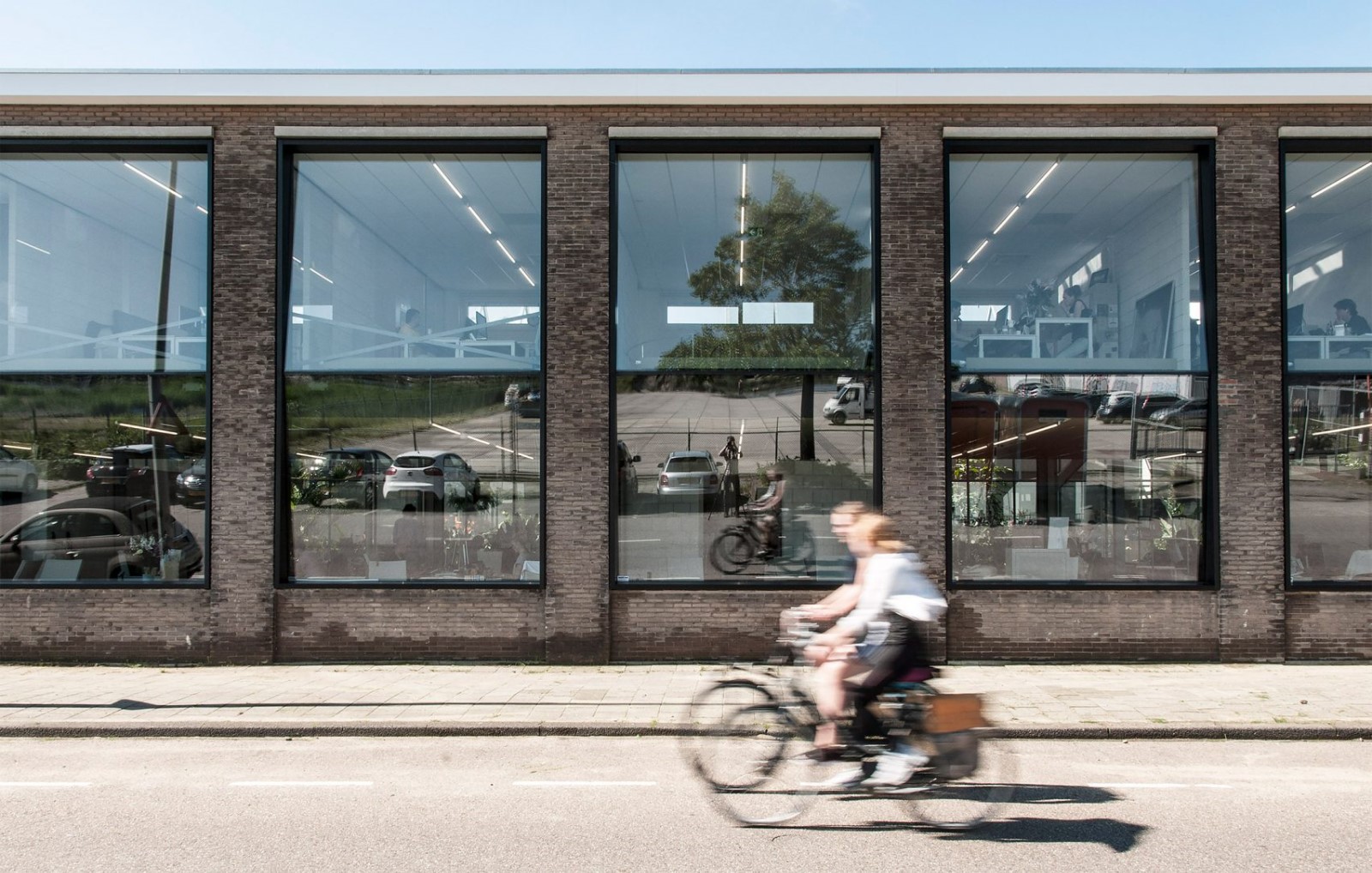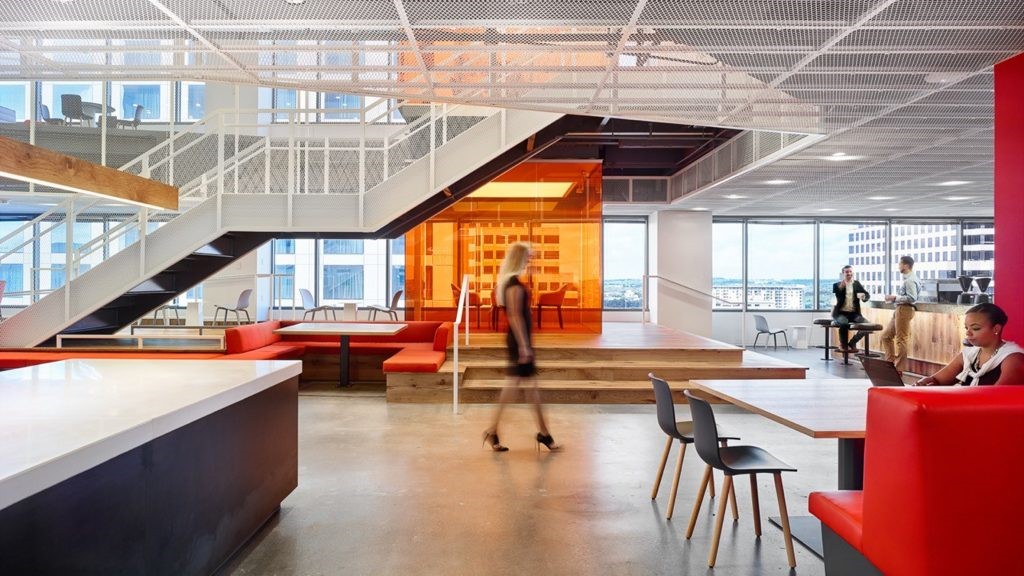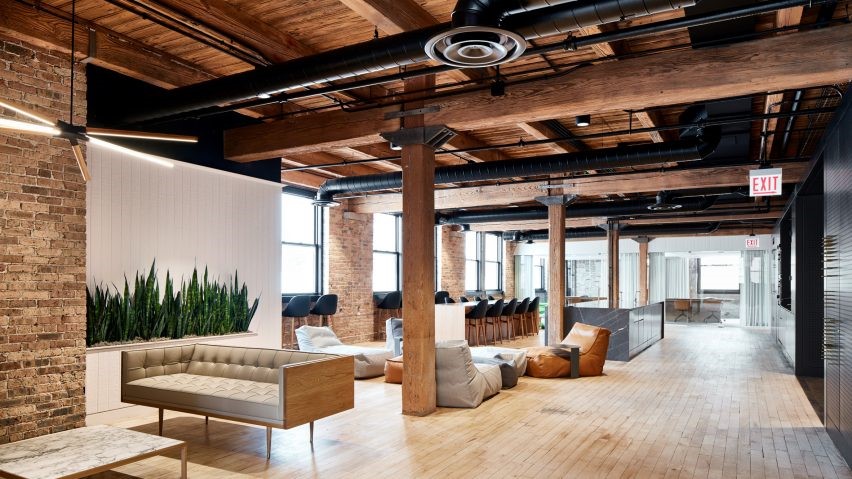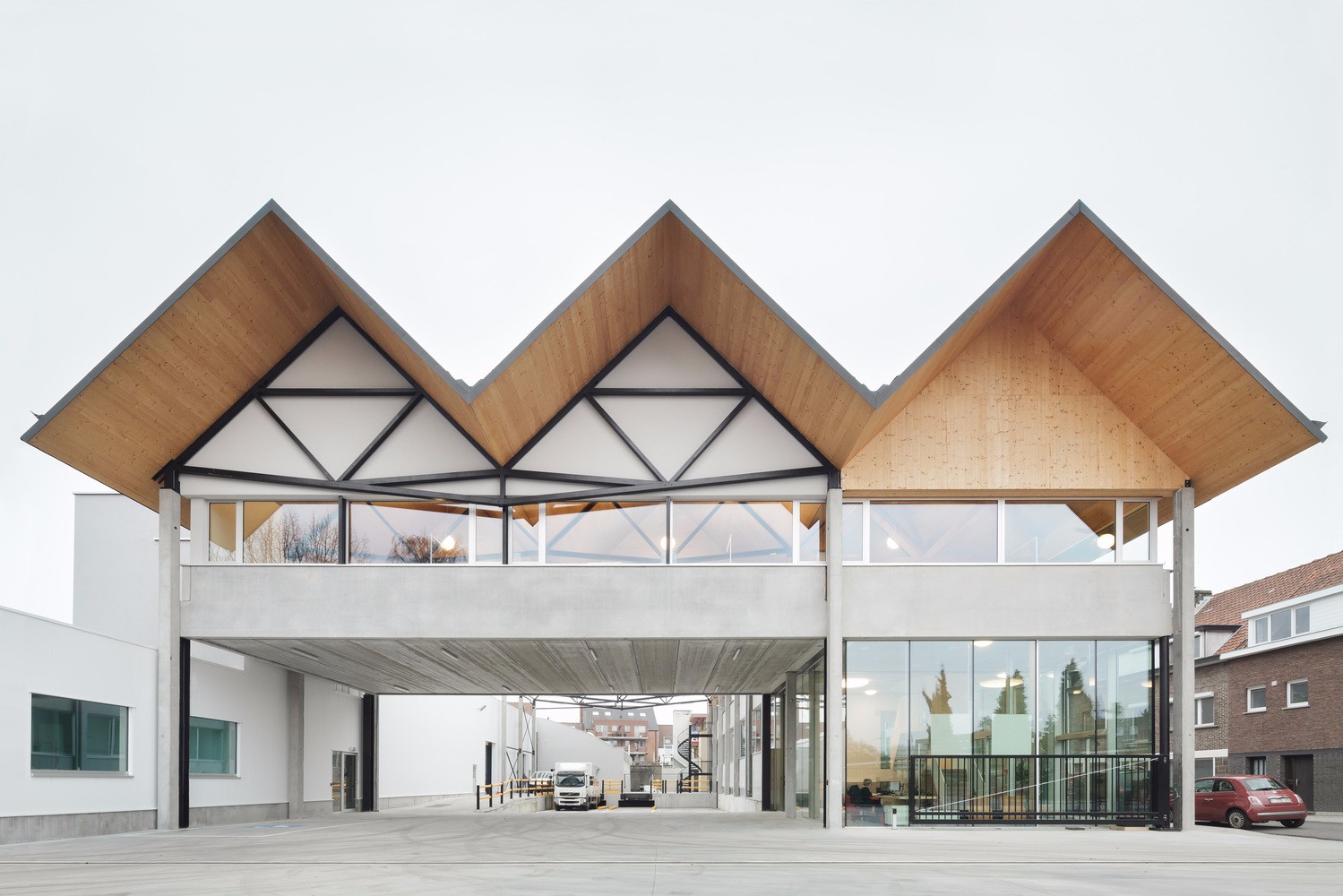Microsoft Domicile Henning Larsen Architects
2015-12-29 03:00
架构师提供的文本描述。这个新的住所将微软的两个丹麦单位集中在同一个屋檐下。该建筑的设计源于微软的工作方式,其中合作和知识共享是关键。这一住所构成了更大城市发展的一部分,最终将包括住宅、商店、咖啡馆和其他企业。我在很多方面都支持微软想要成为一个城市不可分割的一部分。
Text description provided by the architects. The new domicile gathers Microsoft’s two Danish units under the same roof. The design of the building originates in Microsoft’s approach to work, where cooperation and knowledge sharing are key. The domicile forms part of a greater urban development, which in time will include residences, shops, cafés and other businesses. I many ways the building supports Microsoft’s wish to become an integral part of a city.
组织的搭配在建筑设计中是显而易见的。两个立方体建筑,分别由六层和七层组成,集中在一个共享的中庭内,为社会和专业人员在感兴趣领域的互动提供空间。中庭保持字母V的形状,其手臂对角延伸到整个建筑。
The collocation of the organizations is clearly visible in the architectural design. Two cubic buildings, of six and seven floors respectively, unite in a shared atrium that offers space for social and professional interactions across fields of interest. The atrium holds the shape of the letter V with its arms stretching diagonally up through the building.
不典型的中庭分布在建筑核心的日光,并确保跨楼层的视觉对话。V形增加了中庭的变化和动态体验。由于相互距离的减少,顶层的楼层比较低的楼层更亲密。公共项目和公共区域,如咖啡馆、礼堂和向丹麦技术大学学生提供的弹出式学习场所,都位于较低的楼层。在整个过程中,微软一直希望有一个开放和诱人的环境。这也被翻译成景观的布局和几乎看不见的在室内和室外之间的过渡。
The untypical atrium distributes the daylight at the core of the building and ensure a visual dialogue across the floors. The V shape adds to a varied and dynamic experience of the atrium. The top floors are more intimate compared to lower ones thanks to the decreasing of mutual distances. Public programs and communal areas such as a café, an auditorium, and pop-up study places offered to the students of the Technical University of Denmark, are located on the lower floors. Throughout the entire process, Microsoft has wished for an open and inviting environment. This is also translated in the layout of the landscape and the almost invisible transition between in- and outdoors.
Activity-based workspaces.
这座建筑的规划源于微软基于工作方法的合作过程,正如比尔·盖茨2005年发表的题为“工作的新世界”的白皮书所描述的那样。因此,汉宁·拉森建筑师的空间规划师一直致力于创造支持内部合作以及与客户和合作伙伴合作的环境。这是通过一系列活动为基础的工作空间的不同大小,从小到中型会议室和大型礼堂强调。
The planning of the building stems from Microsoft’s work methodology based cooperative processes, as described in a 2005 whitepaper by Bill Gates entitled “The New World of Work”. Henning Larsen Architects’ space planners have thus been focusing on creating environments supporting cooperation internally, as well as with clients and partners. This is emphasized through a series of activity-based workspaces of various sizes, from smaller to midsized conference rooms and large auditoriums.
由厨房、休息室家具、Xbox和桌球比赛组成的社会“枢纽”位于每一层的中心位置。员工们在这里见面。因此,“中心”加强了各部门之间的互动和知识共享。所有的工作场所都位于建筑物的正面,以确保每名员工在白天都有最佳的日光条件。建筑设计具有很大的灵活性,适合于未来的不同用途。
Social “hubs” comprising a kitchenette, lounge furniture, Xbox and table soccer games are centrally located on every floor. Here the employees meet. Thus, the “hub” strengthens the interaction and knowledge sharing across departments. All workplaces are located along the facades of the building in order to ensure optimal daylight conditions throughout the day for every employee. The building design offers a large degree of flexibility, which makes it suitable for different purposes in future.
该建筑的许多方案转化为一个相互处理的景观和广场周围的新住所。城市景观由小的、绿色的绿洲组成,所有这些都是公众可以接触到的。在春季和夏季,绿洲变成了活跃的户外活动区。
The many programs of the building translates in a mutual processing of the landscape and plazas surrounding the new domicile. The urban landscape consists of small, green oases, all of which are accessible to the public. During spring and summer, the oases turn into lively pockets of outdoor activities.
景观支持在建筑物之间的平稳过渡,林格比的周围性质,和人的规模,并提供一个欢迎的气氛,无论是员工和客人在他们进入大楼的路上。对现场小气候条件的几项研究为景观规划提供了依据。关于风、太阳和阴影的事实符合景观建筑师的工作条件,以便为植被和人类提供最佳条件。
The landscape supports a smooth transition between the buildings, the surrounding nature of Lyngby, and the human scale, and offers a welcoming atmosphere to both employees and guests on their way into the building. Several studies of the microclimatic conditions on the site have informed the planning of the landscape. Facts about wind, sun and shade qualify the work of the landscape architects in order to provide optimal conditions for both vegetation and humans.
该建筑符合丹麦15级低能耗建筑标准。该设计来源于可持续建筑设计的整体方法,其中日光、室内气候和能源消耗是关键。紧凑的住所几何学以及材料的选择确保了高度的紧密性。一个高效的通风系统和日光监测照明设计增加了总能耗的降低。此外,过剩的热量部分地使建筑物变暖。
The building meets the Danish standard for low energy buildings, class 15. The design originates from a holistic approach to sustainable building design where daylight, indoor climate and energy consumption are key. The compact geometry of the domicile as well as the material selection ensure a high level of tightness. An efficient ventilation system and daylight monitored lighting design add to the reduction of the total energy consumption. Furthermore, excess heat partly warms up the building.
Architects Henning Larsen Architects
Location 2800 Lyngby, Denmark
Category Office Buildings
 举报
举报
别默默的看了,快登录帮我评论一下吧!:)
注册
登录
更多评论
相关文章
-

描边风设计中,最容易犯的8种问题分析
2018年走过了四分之一,LOGO设计趋势也清晰了LOGO设计
-

描边风设计中,最容易犯的8种问题分析
2018年走过了四分之一,LOGO设计趋势也清晰了LOGO设计
-

描边风设计中,最容易犯的8种问题分析
2018年走过了四分之一,LOGO设计趋势也清晰了LOGO设计


































































